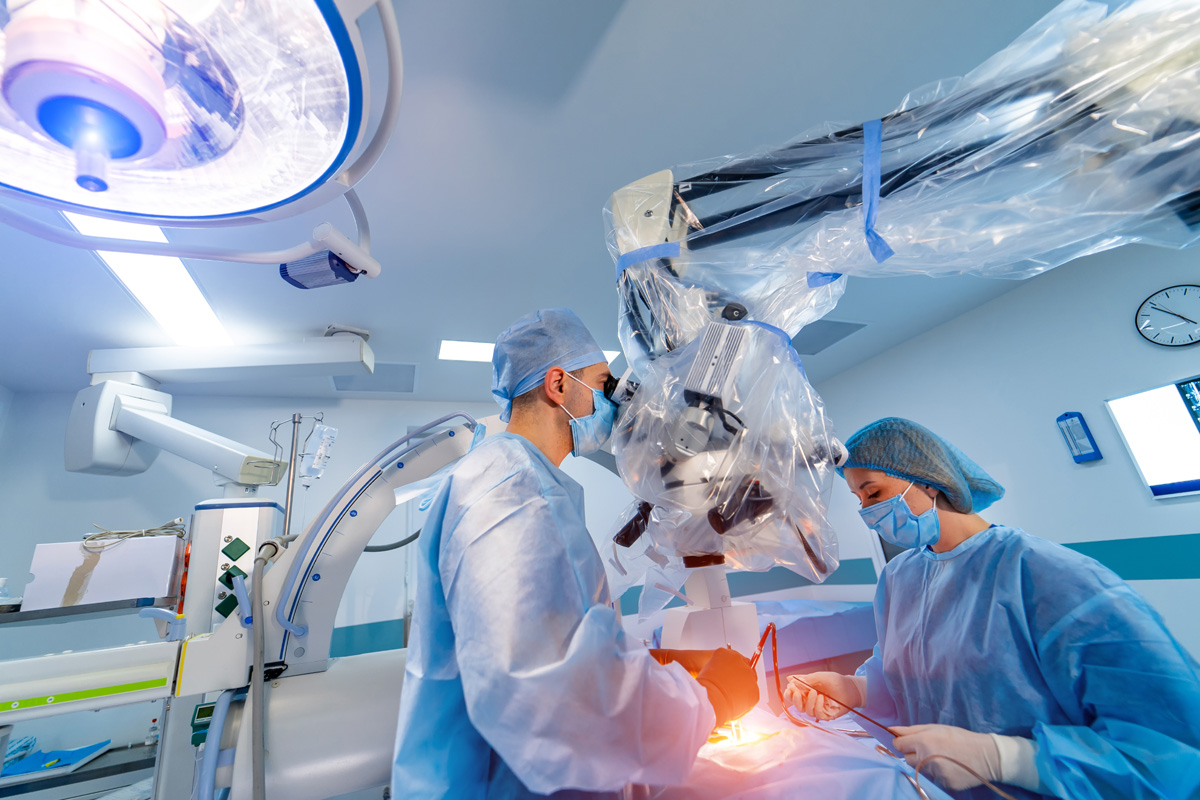Percutaneous discectomy, a minimally invasive surgical intervention, offers an innovative approach to treating herniated discs. By using either radiofrequency or laser energy, physicians can precisely target and remove the problematic disc material, aiming to alleviate pain and enhance patients’ quality of life. This procedure, while promising shorter recovery times and reduced hospitalization, also raises questions about potential risks and patient outcomes. As we explore this subject further, we will consider the benefits, complications, and real-world implications of percutaneous discectomy in contemporary healthcare.
Understanding Percutaneous Discectomy
Often seen as a pivotal aspect of this procedure, percutaneous discectomy involves the surgical removal of problematic disc material in the spine through a small incision, which can effectively alleviate the pressure on surrounding nerve roots. This procedure is typically performed under radiological guidance, ensuring the precise targeting and removal of the disc material causing pain or discomfort.
A critical component of this procedure is its cost-effectiveness. The discectomy cost analysis often reveals a lower financial burden when compared to traditional open surgery. It requires less hospitalization time, leads to quicker recovery, and as a result, leads to less loss of productivity.
However, it’s important to compare this surgical procedure with non-surgical interventions, like physiotherapy. Studies comparing discectomy versus physiotherapy suggest that in some cases, conservative management can lead to comparable outcomes in terms of pain relief and functional improvement. But it’s also important to note that a significant number of patients who initially opt for physiotherapy might eventually require surgery.
The Anatomy of a Herniated Disc
To fully appreciate the intricacies of a percutaneous discectomy, one must first understand the complex anatomy of a herniated disc. The spine is a stacked structure of vertebrae separated by intervertebral discs. These discs, quintessential in disc anatomy basics, are composed of an outer fibrous ring called the annulus fibrosus and an inner gel-like core called the nucleus pulposus.
A herniated disc, also known as a slipped or ruptured disc, occurs when the nucleus pulposus bulges or leaks out through a tear in the annulus fibrosus. This protrusion can impinge on nearby nerves or the spinal cord, leading to symptoms such as pain, numbness, or weakness.
Herniated disc prevention is often centered around maintaining a healthy lifestyle. Regular physical activity, particularly exercises that strengthen the core muscles, can help support the spine. Additionally, maintaining a healthy weight can reduce the pressure on the discs. Proper body mechanics during activities, such as lifting and bending, are also vital in preventing disc herniation. Finally, smoking cessation is advised as smoking can reduce nutrient supply to the discs, leading to disc degeneration.
How a Herniated Disc Causes Pain
The manifestation of pain due to a herniated disc is a complex process that involves both, the anatomical structure of the spine and the intricate functioning of the nervous system. The displacement of the disc material can exert pressure on nearby nerves, leading to localized or radiating pain. This section will elucidate the pathophysiological mechanisms underpinning the pain associated with disc herniation, and the subsequent impact on the nervous system.
Understanding Herniated Disc Pain
In comprehending the pain caused by a herniated disc, one must first grasp the fundamental structure and function of the intervertebral discs and their role in the human spinal column. Disc identification is key to this understanding. The discs, located between the vertebrae, are ring-like structures consisting of a tough, outer layer (annulus fibrosus) and a gel-like inner core (nucleus pulposus). They act as shock absorbers, reducing the impact of body movements on the spine. When a disc is herniated, the inner core protrudes through a tear in the outer layer, leading to inflammation and potentially painful nerve compression. Pain management in such cases often involves reducing inflammation and decompressing the affected nerve to alleviate discomfort.
Impact on Nervous System
Unraveling the complex interplay between a herniated disc and the nervous system reveals the underlying mechanisms of the pain experienced. The protrusion of disc material into the spinal canal disrupts nerve function, resulting in pain, numbness, and weakness. The nervous system’s resilience is tested, as it endeavors to adapt to these physical changes. Neurological implications are profound, with potential for long-term impact on nerve health and overall mobility. Chemical irritants from the herniated disc also incite inflammatory responses, exacerbating nerve irritation and heightening pain perception. Therefore, the nervous system’s response to a herniated disc is multifaceted, involving both physical disruption of nerve pathways and complex biochemical reactions. Understanding this interplay is critical in the development of effective treatment strategies.
Traditional Treatment Methods for Herniated Discs
Thorough treatment methods for herniated discs encompass a range of surgical and non-surgical approaches. These include spinal fusion surgery, lumbar disc microsurgery, and chiropractic disc treatments, each with its own advantages and associated risks. A complete understanding of these methods is instrumental in determining the most effective treatment path for specific patient cases.
Spinal Fusion Surgery
As a conventional treatment method for herniated discs, spinal fusion surgery involves the joining of two or more vertebrae in the spine to limit their movement and alleviate pain. It’s an invasive procedure with a significant recovery period and requires fusion surgery rehabilitation to restore peak mobility.
While effective, it’s not without drawbacks, including potential for adjacent segment disease. As a result, spinal fusion alternatives are continually being explored and developed to offer patients less invasive solutions with fewer long-term complications. These alternatives include disc arthroplasty, interspinous spacers, and minimally invasive stabilization, all aiming to maintain spine mobility while reducing pain. Each option presents its own set of advantages and potential risks, underscoring the importance of personalized treatment planning in herniated disc management.
Lumbar Disc Microsurgery
Lumbar disc microsurgery, another traditional treatment approach for herniated discs, employs a minimally invasive technique to remove or trim the disc material causing nerve irritation. Microsurgery advancements have facilitated a more accurate and precise execution of this procedure, improving patient outcomes. Understanding the lumbar disc anatomy is critical for successful surgery, as the surgeon must navigate the complex network of spinal nerves and structures. The procedure involves making a small incision, insertion of a microscope to view the affected area, and then carefully removing or trimming the offending disc material. This method targets the source of the problem directly, minimizing damage to surrounding tissues. It has proven to be an effective treatment for herniated discs and a viable alternative to more invasive procedures.
Chiropractic Disc Treatments
Employing manual adjustments and manipulation, chiropractic disc treatments serve as another non-invasive approach to alleviating the pain and discomfort associated with herniated discs. The Chiropractic benefits are numerous and include improved mobility, reduced inflammation, and enhanced overall health.
Disc alignment techniques play a vital role in such treatments, with chiropractors utilizing their expert knowledge and skills to correct misalignments and promote excellent spinal health.
Here are some key points to note about chiropractic disc treatments: – Utilizing natural, non-invasive methods. – Enhancing the body’s innate healing capabilities. – Emphasizing on holistic wellness and preventative care. – Employing precise, targeted adjustments to correct disc misalignments. – Offering a viable alternative to surgery or medication for many patients.

The Evolution of Minimally Invasive Procedures
In the field of spinal surgery, the evolution of minimally invasive procedures has revolutionized the approach to conditions such as lumbar disc herniation, offering safer and faster recovery options for patients. The innovation trends and technology impact observed over the past few decades have been instrumental in driving this evolution.
Initially, open surgeries were the norm, requiring extensive incisions and significant tissue disruption. However, the advent of endoscopic and percutaneous techniques, facilitated by advancements in imaging and surgical tools, has shifted the paradigm. These procedures, characterized by smaller incisions and reduced tissue trauma, have enabled surgeons to perform complex operations with precision, leading to less post-operative pain, shorter hospital stays, and quicker returns to normal activity for patients.
Moreover, the incorporation of computer-assisted navigation systems has further refined the process, providing real-time, three-dimensional visualization that enhances surgical accuracy. Concurrently, the development of high-resolution imaging modalities like MRI and CT scans has improved diagnostic capabilities, facilitating the identification of appropriate surgical candidates.
Step-by-Step Process of Percutaneous Discectomy
The step-by-step process of percutaneous discectomy is a topic that necessitates thorough examination. It is essential to comprehend the intricacies of the procedure itself, and the subsequent post-procedure care and recovery. This discussion will elucidate the aforementioned aspects, offering a detailed understanding of this minimally invasive operation.
Understanding Percutaneous Discectomy
Percutaneous discectomy, a minimally invasive surgical procedure, involves a step-by-step process that aims to relieve pain caused by herniated discs pressing on nerve roots. As one of the discectomy alternatives, it is preferred due to its lower procedure cost and lesser post-surgical recovery time.
To understand this procedure better, consider the following points:
- It is performed under local anesthesia, reducing the risks associated with general anesthesia.
- A small probe is introduced into the disc space via a needle.
- The procedure employs radiofrequency or laser energy to remove disc material.
- It requires a smaller incision, resulting in less tissue damage.
- Post-procedure, patients usually experience immediate relief from pain.
While effective, it’s essential to consult a medical professional to decide if percutaneous discectomy is the best option for you.
Procedure of Discectomy
Having understood the fundamental aspects of percutaneous discectomy, we now move to a more detailed discussion on the actual procedure, outlining each step involved in its execution. The procedure begins with the patient under local anesthesia, positioned prone. A needle is inserted through the skin into the disc space under fluoroscopic guidance. A guidewire is then passed through the needle into the disc space, followed by dilators to create a working channel. The nucleus pulposus is then removed using a specially designed instrument. This technique has seen significant advancements, making it a viable alternative to more invasive discectomy methods. However, it’s crucial to remember that each patient’s case is unique and requires a tailored approach.
Post-Procedure Care & Recovery
Upon completion of the percutaneous discectomy, meticulous attention to post-operative care and a structured recovery process are important to guarantee optimal healing and successful outcomes.
- A detailed plan integrating pain management strategies should be implemented to alleviate discomfort. This could often involve a combination of medications and non-pharmacological interventions.
- Rehabilitation exercises are an essential part of the recovery, aimed at restoring flexibility and strength.
- Regular follow-up appointments ensure early detection of complications and allow for adjustments in treatment strategies.
- Patients are educated on wound care to prevent infection and promote healing.
- Lifestyle modifications, such as adopting a healthy diet and quitting smoking, can enhance recovery.
This systematic approach to post-procedure care and recovery maximizes the benefits of percutaneous discectomy.
Comparing Percutaneous Discectomy to Traditional Surgery
In evaluating the effectiveness of percutaneous discectomy, it is crucial to draw a comparison with traditional surgical methods used for disc herniation treatment. Surgical alternatives such as open discectomy or microdiscectomy typically involve a larger incision, general anesthesia, and a more extended hospital stay. These methods also usually require a longer recovery period due to the invasive nature of the procedure.
Percutaneous discectomy, on the other hand, is a minimally invasive procedure that involves a smaller incision, local anesthesia, and typically allows the patient to return home the same day. This procedure has been reported to result in shorter hospital stays and a faster return to daily activities, significantly impacting the recovery experiences of patients.
However, it’s crucial to acknowledge that the choice between percutaneous discectomy and traditional surgery should be based on individual patient factors including the size and location of the herniated disc, the patient’s overall health status, and their personal preferences. Both procedures have been found to be effective for relieving symptoms of a herniated disc, but the less invasive nature of percutaneous discectomy may offer advantages in certain cases.
Benefits of Percutaneous Discectomy
Reflecting on the aforementioned comparison, the benefits of percutaneous discectomy extend beyond its minimally invasive nature. The procedure boasts a robust set of advantages that position it as a viable alternative to traditional discectomy.
In particular, the benefits of percutaneous discectomy include:
- Discectomy cost effectiveness: Percutaneous discectomy is typically less costly compared to traditional surgical methods due to fewer required resources and shorter hospital stays.
- Reduced recovery time: Patients often recover more quickly from percutaneous discectomy, allowing them to resume their daily activities sooner.
- Less scarring and pain: The procedure results in smaller incisions, leading to less postoperative pain and scarring.
- Lower infection risk: The risk of postoperative infections is notably reduced due to the minimally invasive nature of the procedure.
- Preservation of spinal stability: Unlike other alternative treatment options, percutaneous discectomy doesn’t compromise the structural integrity of the spine.
These advantages make percutaneous discectomy an attractive option for patients and healthcare providers alike. However, it’s important to carefully consider the potential risks and complications before making a decision, which we will discuss in the next section.

Potential Risks and Complications
While percutaneous discectomy presents numerous advantages, it is important to also explore the potential risks and complications associated with this minimally invasive procedure. Like any surgical intervention, it carries a certain degree of risk, often dependent on the individual patient’s health status, the complexity of the case, and the surgeon’s expertise.
Potential complications can include infection, bleeding, nerve damage, and a possible allergic reaction to the anesthetic used. Infection prevention is paramount in any surgical procedure, and in the case of percutaneous discectomy, it is achieved through strict aseptic techniques and prophylactic antibiotics. Despite these measures, there remains a small risk of postoperative discitis, a relatively rare but serious infection of the intervertebral disc space.
Moreover, there is a chance that the disc herniation could recur or that the discectomy may not provide the expected relief from symptoms. In such cases, discectomy alternatives may need to be considered, including traditional open discectomy, microdiscectomy, or even spinal fusion for more severe conditions.
Lastly, it’s important to remember that every patient is unique, and what works well for one may not work as well for another. Hence, individualized patient assessment and clear communication about potential risks are key to maximizing the procedure’s benefits while minimizing its risks.
Expected Recovery Timeline
The patient’s journey to recovery following a percutaneous discectomy can vary greatly, largely dependent on individual health conditions, the severity of the disc herniation, and the body’s natural healing process. Considering these factors, a tailored post-operative rehabilitation program is essential.
The recovery timeline typically spans several weeks to a few months. The discectomy cost analysis will also factor in the required post-operative care and rehabilitation exercises post discectomy. The following are general guidelines in the recovery timeline:
- Initial 1-2 weeks: The patient may experience mild to moderate discomfort, which can be managed with prescribed pain medication. Light walking is encouraged.
- 2-6 weeks: Pain should gradually decrease. Physical therapy, focusing on rehabilitation exercises post discectomy, typically begins.
- 6-12 weeks: The patient should see marked improvement and can gradually return to normal activities, with doctor’s approval.
- 3-6 months: Full recovery is typically expected, including resumption of strenuous activities.
- 6 months onwards: Follow-up appointments for monitoring and prevention of future disc herniation.
Each patient’s recovery timeline may vary, and continuous care and assessment are vital to ensure optimal healing and prevent complications.
Real Patient Experiences and Outcomes
To further understand the implications and effectiveness of percutaneous discectomy, it is important to examine anecdotal evidence from patients who have undergone the procedure, and the outcomes they experienced.
Many patients report significant relief from chronic back pain following percutaneous discectomy, with a notable improvement in their quality of life. The minimally invasive nature of the procedure also results in shorter hospital stays and faster recovery times when compared to traditional open discectomy.
Discectomy cost analysis reveals that percutaneous discectomy is often more cost-effective than traditional surgery, considering both the direct costs of the procedure and the ancillary costs associated with recovery. Reduced hospital stays, lower risk of complications, and quicker return to work all contribute to the economic feasibility of percutaneous discectomy.
Patient support networks play an important role in the post-operative phase, offering emotional and practical support. These networks, often composed of medical professionals, family, and peers who have undergone the same procedure, provide invaluable resources for education, recovery tips, and encouragement. Consequently, patients who leverage these networks often report higher satisfaction rates and better overall outcomes, underscoring the importance of holistic care in the context of percutaneous discectomy.
Frequently Asked Questions
What Is the Cost of a Percutaneous Discectomy Procedure?
The cost of a specific surgical procedure varies depending on numerous factors including geographic location, facility fees, and insurance coverage. Considering discectomy recovery time and patient eligibility criteria can also influence the overall expense.
Does Health Insurance Typically Cover Percutaneous Discectomy?
The coverage of specific procedures is contingent on individual health insurance plans. Insurance limitations and the recovery timeline can influence this. It’s recommended to verify with your provider whether the procedure is covered.
Are There Specific Conditions or Circumstances Where This Procedure Is Not Recommended?
Certain conditions may contraindicate a discectomy, such as severe osteoporosis, active infection, or spinal tumor. Additionally, high procedure risks may deter its use in patients with significant comorbidities or advanced age.
How Often Is a Repeat of the Percutaneous Discectomy Procedure Necessary?
The necessity for a repeat procedure depends on several factors including procedure success rates and the patient’s recovery timeline. However, a significant percentage of patients do not typically require a second procedure.
Are There Alternative Minimally Invasive Procedures to Percutaneous Discectomy?
Yes, there are alternative minimally invasive procedures. These include endoscopic discectomy and laser discectomy. Both offer advantages in post operation recovery and pre procedure preparation, similar to percutaneous discectomy.

